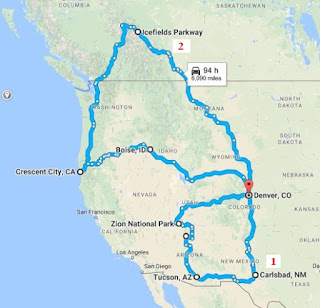COG does Newline Paddocks
24 members and guests gathered at the usual spot for this site on a cool, but not as windy as recently, morning. By the time we had moved off 14 more common species had been written down. As an innovation, we walked along the road to the quarry first before exploring the paddock.
A Brown Goshawk did a high level fly past forming the leader of 4 raptor species seen in the day. Brown Falcon not too long after, 2 Wedgetails - one member suggesting this might be a pair whose nest would be in range of the site - and a Nankeen Kestel hunting when we got back to the cars. Another highlight were Double-barred Finches, of which somewhat over 20 were recorded.
This strategy was immediately rewarded by several members hearing a Brown Treecreeper call within the paddock. Not to worry, we'll find it when we come back. A few non-avian fings wiv wings were also noted:
- Feral bees had developed a hive in a crack in an old tree.
- Being close to the airport a large number of aircraft cruised by.
A Brown Goshawk did a high level fly past forming the leader of 4 raptor species seen in the day. Brown Falcon not too long after, 2 Wedgetails - one member suggesting this might be a pair whose nest would be in range of the site - and a Nankeen Kestel hunting when we got back to the cars. Another highlight were Double-barred Finches, of which somewhat over 20 were recorded.
The only breeding records were both parrots. The first were a pair of Red-rumped Parrots with the female sitting in a nest hollow. I took a photo on full extended zoom at about 50m range, so I think the outcome is quite reasonable. (I have however highlighted the parrots!)
A little later your correspondent saw what looked like another silhouetted Red-rump, but on being looked at with binoculars it transformed into a Rainbow Lorikeet
which promptly dived into a hollow not to reappear while we were present.
The advantage of the cool weather is a clear sky which forms an attractive backdrop for Sulphur-crested Cockatoo photos!
A litle later I heard a beautiful call which I tried to persuade myself was a Pied Butcherbird. Alas no, it was a Grey Butcherbird, but I still consider the call very attractive.
It is always a surprise to me how much black there is on these birds. Of course on the Pied species it also comes onto the breast as a 'bib'.
There was no evidence of returning migrants (refer opening comment about the weather). In paragraph 2 you will find a very optimistic statement about finding the Brown Treecreeper later. We didn't.
In total I recorded 39 species of which a full list will go on the trips page of the COG website in due course










Comments
I have posted a few more photos of the outing here: COG Does Newline Paddocks Additional Photos.